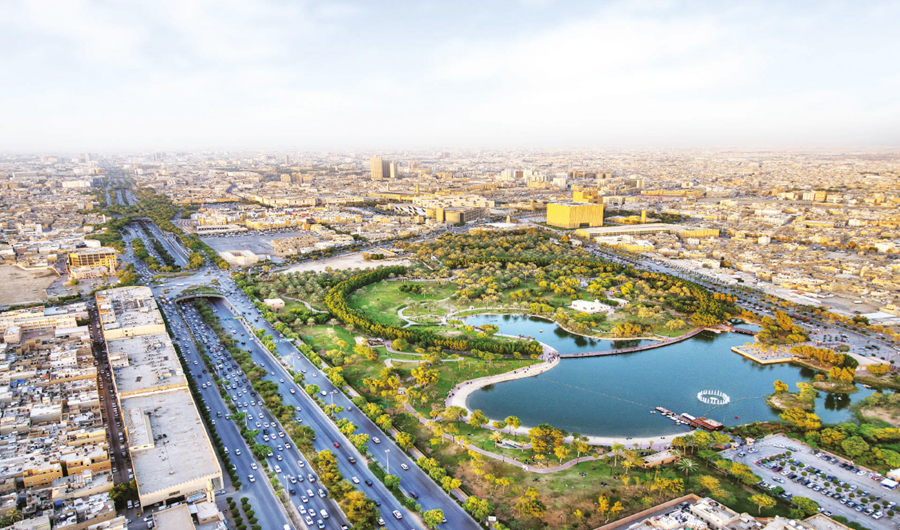RIYADH: The Green Riyadh project, one of the world’s largest urban greening initiatives, is rapidly bearing fruit as it transforms main roads in the capital.
Major thoroughfares, including King Khalid, Makkah and King Salman roads, are getting a facelift as part of the Vision 2030 goal of improving quality of life in the city.
Dr. Fahad Al-Mana, a professor of Ornamental Plants, Gardens and Green Areas at King Saud University, told Arab News that native tree species being used for the project include Ziziphus spina-christi, Acacia gerrardii and Prosopis cineraria, commonly known as the ghaf tree.
According to Al-Mana, the trees can survive in harsh desert conditions and will grow without intensive agricultural care.
“Most of the tree species used in the planting of the Green Riyadh project are from a well-developed local environment with low agricultural service and care,” he said.
Environmental conditions in Riyadh were taken into account during the tree selection process. The species can grow to a large size in only three years.
“In some locations, they have moved large 3-year-old local trees that were taken care of in plant nurseries to new locations where they are growing successfully,” Al-Mana said.
Green Riyadh will increase the amount of greenery in the city and augment the green cover in the Saudi capital with the planting of 7.5 million trees around the city’s main features and facilities.
The project will reduce the average ambient temperature by 2 degrees Celsius and improve air quality, encouraging people to follow a healthier lifestyle by walking or cycling.
FASTFACTS
• The project will reduce the average ambient temperature by 2 degrees Celsius and improve air quality, encouraging people to follow a healthier lifestyle by walking or cycling.
• The project will maximize the use of recycled water in irrigation works by increasing usage from 90,000 cubic meters per day to more than 1 million cubic meters per day through the construction of a new recycled water network.
• Green space in the city will increase from 5 percent to 9 percent by 2030
“The aim of planting trees in the streets is to provide shade and moderate the temperature, especially in summer, which contributes to the purification of air and reduces environmental pollution by protecting the city from sand storms, winds and dust. In addition, it gives an aesthetic view and the element of nature enters the city and nearby structures,” said Al-Mana.
He added that trees, especially those planted in central street islands, must have long trunks and high branches to avoid hindering the movement of pedestrians and cars. The trunk must measure at least 3 to 4 meters and the size of the trees planted must be proportional to the width of the island.
Al-Mana said green space in the city will increase from 5 percent to 9 percent by 2030.
According to the Green Riyadh website, the project will maximize the use of recycled water in irrigation works by increasing usage from 90,000 cubic meters per
day to more than 1 million cubic meters per day through the construction of a new recycled water network.
Al-Mana said the Green Riyadh project will also reduce carbon dioxide and impurity levels in the city.
“Based on experience, roads and streets without trees contain eight to 10 times the amount of dust compared with streets lined with trees on both sides,” he said.

from Saudi Arabia https://ift.tt/31aZ69A





0 Comments:
Post a Comment